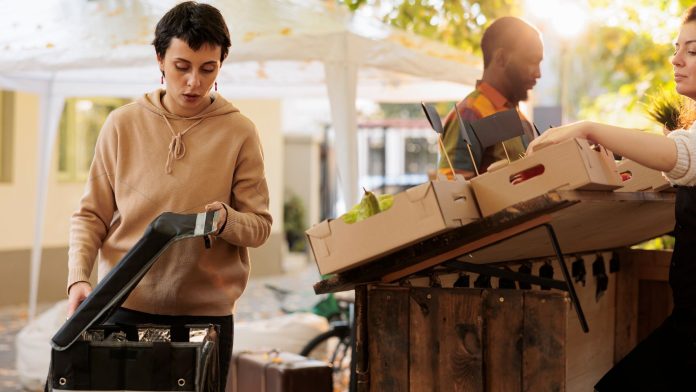In a bold move that could change the grocery shopping landscape, Amazon is now allowing Prime members in over 1,000 cities to order fresh groceries with the same speed and convenience as their everyday purchases. The tech giant announced that it plans to expand this service to more than 2,300 locations by the end of 2025, opening new avenues for small business owners in the grocery sector and beyond.
Amazon’s grocery expansion allows customers to shop for a vast selection of perishable items—including produce, meats, dairy, and baked goods—alongside an array of products from electronics to home essentials. Notably, Prime members can enjoy free Same-Day Delivery on orders over $25, while non-members can still access this service for a fee, providing different tiers of service based on consumer needs.
Doug Herrington, the CEO of Worldwide Amazon Stores, expressed, “We’re continuously innovating to make grocery shopping simpler, faster, and more affordable for our customers, especially Prime members.” He added that customers can seamlessly purchase both groceries and non-perishable goods in a single transaction, dramatically simplifying the shopping experience.
For small business owners looking at the grocery market, this development presents both opportunities and challenges. On one hand, Amazon’s focus on affordability and convenience might encourage consumers to turn to online grocery options more frequently, potentially increasing market demand. Entrepreneurs in the grocery sector can leverage this shift by improving their online offerings or partnering with delivery services to enhance customer convenience.
Moreover, Amazon’s entry into the fresh grocery space could drive competition among small grocers. To stay relevant, business owners may need to ensure their products are not only of high quality but also priced competitively. It’s essential for small businesses to distinguish themselves through unique offerings, personalized services, and local touches that online giants cannot easily replicate.
The early adoption of Amazon’s Same-Day Grocery service shows that convenience speaks volumes to consumers. In regions like Phoenix and Orlando, first-time Amazon grocery shoppers engaged with the platform twice as often as those who hadn’t purchased fresh food, indicating a significant shift in consumer behavior. Early popular items like strawberries and sweet potatoes have even outpaced traditional electronics, showcasing rising demand for groceries ordered online.
However, small business owners should consider the potential pitfalls of competing against a giant like Amazon. The reliance on a single platform for distribution can pose risks, particularly if Amazon decides to alter its pricing or delivery structures. Additionally, the costs associated with competing against Amazon’s logistics capabilities may strain smaller operations that lack the scale and resources to keep pace.
Consumer confidence remains crucial in the grocery sector, and Amazon emphasizes that its specialized temperature-controlled fulfillment network ensures the freshness and quality of perishable items. Each product undergoes a rigorous quality check before delivery, which may prompt smaller players to reassess their own quality assurance processes. Adapting to consumer expectations regarding food safety and freshness could become a key focus for small businesses as they compete for market share.
While Amazon’s grocery expansion poses challenges, it also offers valuable lessons for small business owners. Businesses should consider enhancing their digital capabilities, diversifying offerings, and embracing convenient shopping experiences, such as curbside pickup or home delivery. Leaning into local sourcing or niche products can also differentiate small grocers from larger competitors.
As Amazon continues to innovate, small businesses must adapt or risk being left behind. Engaging customers with personalized experiences and local connections can offer a competitive edge in a rapidly evolving marketplace. Monitoring trends in online grocery shopping will be essential as small business owners navigate this new terrain.
For more details on Amazon’s grocery expansion, visit the original press release here. The forthcoming changes in the grocery delivery landscape will not only reshape consumer habits but also provide crucial insights for small businesses aiming to thrive amid increased competition.
Image Via Envato: DC_Studio



